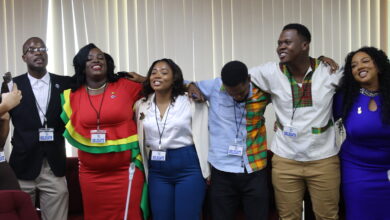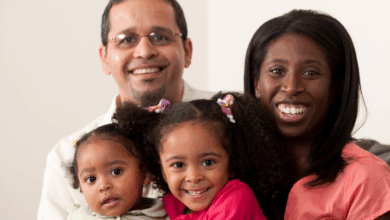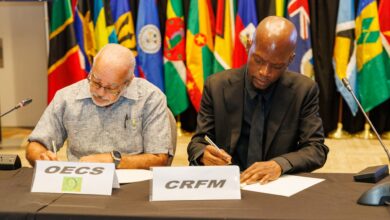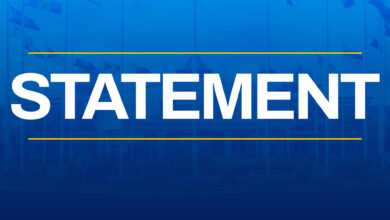As I greet you on behalf of the Caribbean Community at this observance of Commonwealth Day, I must apologise for the absence of the Secretary-General who has been unavoidably detained in Trinidad. He sends his personal best wishes and regrets that he could not be part of this celebration involving the Commonwealth with participation by a segment of our population that is so close to his heart – the Youth.
Today as the modern Commonwealth celebrates its 53rd Anniversary, its importance and relevance to us in the Caribbean Community is undiminished. Twelve of the Commonwealth’s 54 states are CARICOM Member States. Another CARICOM Member State, Montserrat, and all three of our Associate Members, Anguilla, British Virgin Islands and the Turks and Caicos Islands are also part of the Commonwealth through their relationship with the United Kingdom as indeed are both of our latest successful applicants for Associate Membership, that is Bermuda and the Cayman Islands.
The Commonwealth nations are spread across both hemispheres and all continents, literally spanning the globe and accounting for one third of the world’s population. This Association of nations brings together many of the world’s faiths, races, languages, cultural traditions and different levels of economic and political development. It is without doubt well placed to exemplify its own theme for this year’s Commonwealth Day, Celebrating Diversity. It is a theme with which we in the Caribbean can readily identify.
On the physical level, walk down Regent Street, here in Georgetown, Dominiestraat in Paramaribo, Frederick Street in Port of Spain or across the Swing Bridge in Belize City and experience a visually stunning reminder of the variety of peoples who make up our region. It is as if the cliche’d phrase, the “melting pot” was invented principally to reflect our society. Here an Amerindian, there an African, followed by an Indian, next to a Middle Easterner close to a Chinese near to a European and in the midst of it all a mixture of any or all of the above. Yes, strolling those streets and others throughout our Community are the descendants of the many Peoples who have helped to shape our history and culture.
Such diversity of origins would naturally influence all aspects of our lives. Although for many of our Member States, a major common factor has been the English language, we hear everyday the different accents and expressions that distinguish one nation from another. It is an English enriched by French and Spanish, as well as African and Indian expressions. In Dominica and Saint Lucia, English co-exists with a French-based patois while in Haiti a similar patois co-exists with French. In Guyana and Jamaica, our own language system has developed, in addition to standard English. In Suriname, in addition to Dutch, Srna-Tonga, a Dutch-based patios, is widely spoken. Among some of our Indigenous Peoples such as Garifuna and Maya, their original language is spoken. Other variations of original language still spoken include Arawak, Wai Wai and Makushi.
Our diversity is also evident in our Religious practices. Christianity, Hinduism and Islam have a significant following. African religious traditions continue to find expression through the followers of Voodoo, Pocomania and Orisha among others and the Spiritual Baptists have also wedded African traditions with Christianity. The Christian commemorations of Christmas and Easter, the Hindu festivals of Diwali and Phagwah and the Muslim observances of Eid-ul-Fitr in particular, are examples of religious celebrations which in our Community have transcended the boundaries of their faith and in which we all participate.
It is possibly in the creative arts however that we have celebrated and demonstrated our diversity best and for which we may be best known worldwide. Carnival is region-wide, Junkanoo in Bahamas, Crop Over in Barbados, Mashramani in Guyana and Owruyari in Suriname are variations on the same themes of festive celebrations. For us in CARICOM, it is the Caribbean Festival of the Arts, CARIFESTA which clearly brings together and reflects all this creativity and diversity. Indeed this building was used for the first time at the First CARIFESTA in1972. Our Community has also produced art forms which are unique and artists and artistes whose contributions to the global cultural mosaic have been well recognised. The Commonwealth Caribbean has produced two of its three Nobel Laureates in the field of literature, Mr Derek Walcott and Sir Vidia Naipaul who, significantly, have written from differing perspectives.
Musically, although calypso and reggae are the rhythms that are most identifiable with our Region, there are other indigenous and diverse musical forms. These include Punta from Belize, Zouk from Haiti, Fra Fra from Suriname, Spouge from Barbados and Chutney from Trinidad and Tobago. Indeed it is the Jamaican reggae artist Bob Marley whose record album appropriately entitled “One Love” was honoured by Time Magazine as the Album of the Millennium.
Ladies and Gentlemen, this richness of diversity is also seen in varieties of food which is celebrated as West Indian cuisine be it pepperpot, callaloo, roti, peanut rice or ackee and saltfish. Much like our Peoples, their origins may differ but they all end up in the same place!
From that short, and definitely not all-encompassing list, we can realise that there is a lot of diversity to celebrate and I have limited myself to the Caribbean Community alone which as stated earlier, accounts for almost a quarter of the nations that make up the Commonwealth. It is small wonder then that the Commonwealth incorporating as it does so much of Africa, India, Australia, New Zealand, Canada, the United Kingdom can boast of its diversity and can see this diversity as a source of strength and a cause for celebration.
The vision of the Caribbean Community is no less. Even in our national mottos this concept is reflected. In Jamaica, Out of Many One People; in Trinidad and Tobago, Together we aspire, Together we achieve and here in Guyana: One Nation, One People, One Destiny.
This is a clear repudiation of those who seek to promote the differences in diversity to satisfy their own agendas. Embracing diversity does not displace your identity.
Further as Her Majesty Queen Elizabeth II, the Head of the Commonwealth pointed out in her message today: ” we recognise that promoting diversity is not just tolerating difference. Living together as neighbours needs more than that. The true celebration of diversity involves reaching out, recognising and embracing difference, and in so doing enriching our lives.”
The Commonwealth of Nations has proven in its fifty four years that nations rich and poor, capitalist and socialist, large and small (geographically and population wise) of all races and religions can not only co-exist but work together and set an example for the rest of the world in trying to make the wealth truly common. This phenomenon revolves around an appreciation of its diversity and a respect for all points of view.
Bridging social and political divides as Her Majesty points out, has also been a feature of the Commonwealth’s continuing work in seeking to encourage democracy, good governance, the rule of law, and respect for human rights.
As the Singapore Declaration of 1971 states within this diversity all members of the Commonwealth hold certain principles in common.” These principles, which were reaffirmed in the Harare Declaration of 1991, include a belief “in the liberty of the individual, in equal rights for all citizens regardless of race, colour, creed or political belief, and in their inalienable right to participate by means of free and democratic political processes in framing the society in which they live.”
“We therefore strive to promote in each of our countries those representative institutions and guarantees for personal freedom under the law that are our common heritage,” the statement continues.
The Harare Declaration stressed the protection and promotion of the fundamental political values of the Commonwealth and put emphasis on the development of human resources, in particular through education, training, health, culture, sport and programmes for strengthening family and community support, paying particular attention to the needs of women, youth and children.
Undoubtedly there have been and continue to be differences, relations among nations have been strained, sanctions have been applied but all recognise the importance of keeping the whole together even if they view some of the parts as being in need of repair.
It is an example that should not be lost on our young people. If we lose sight of that big picture then we are doomed to be trapped forever in our own little corners, satisfying our own little desires and ceding the advantage to those who would use diversity as a divisive tool. The examples are all too clear of the path where that would lead us, be it the Middle East, Northern Ireland, Bosnia or Kosovo and do not believe for one moment that it cannot happen in the Caribbean.
Let us therefore leave this place today resolved to draw from the wellspring of strength that is our diversity and make it truly a cause for celebration.





